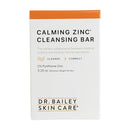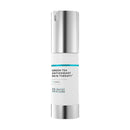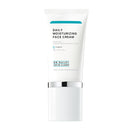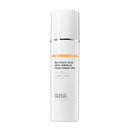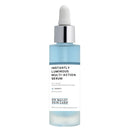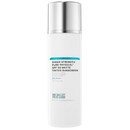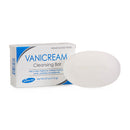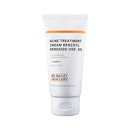How Do You Know if You Have an Allergy to Hair Products Like Jessica Alba?

How do you know if you have an allergy to hair products? Your hair care products are some of the most allergen-filled personal care products that you use. The most common allergic reaction to hair care products is allergic contact dermatitis. Jessica Alba went to the emergency room because of an allergic reaction to a hair care product that got into her eyes.
Allergy to Hair Products
What does an allergy to hair care products look like?
The allergic reaction to hair care products is typically on the skin. The rash will be red, itchy and scaly at skin sites that touched the allergen. The skin can even develop small blisters when the reaction is really bad. You expect the rash on your scalp, but it can also happen on the skin of your face, on and behind your ears, and on your neck. You can even have the rash running down the top of your back where shampoo and conditioner rinse down from your scalp.
The allergic contact dermatitis rash you get from hair care products is also called type 4 delayed hypersensitivity reaction. It is different than hives (or welts), which many people associate with allergic reactions. Familiar type 4 delayed hypersensitivity reactions include poison oak or poison ivy, which produce the classic and severe form of allergic contact dermatitis in many people.
Allergic contact dermatitis is at first a slow type of allergy that builds into a rash. It can take days or weeks, and often happens after a person has successfully tolerated an ingredient or product in the past. Hair care products are full of allergens that can cause allergic contact dermatitis.
 The most notorious allergens in hair care products responsible for allergic reactions include the fragrances and preservatives. Even ‘natural’ fragrances can cause trouble, citrus being one of those. I am allergic to citrus so I know how many personal care products are laden with this wonderful allergen! Allergic rashes develop because these taunting allergens remain on the skin when you use your hair care products. Knowing how the contact occurs will help you narrow down which product it is. Think about it.
The most notorious allergens in hair care products responsible for allergic reactions include the fragrances and preservatives. Even ‘natural’ fragrances can cause trouble, citrus being one of those. I am allergic to citrus so I know how many personal care products are laden with this wonderful allergen! Allergic rashes develop because these taunting allergens remain on the skin when you use your hair care products. Knowing how the contact occurs will help you narrow down which product it is. Think about it.
Hair care products touch your skin to cause allergic reactions in three ways:
- Sprays send airborne droplets onto facial skin, including the delicate eyelid skin. Eyelid skin is often the 'canary in the coal mine' that reacts to allergens first.
- Products rinse over the skin leaving a layer of allergen behind. Areas of skin at risk for this type of exposure are typically the facial skin, behind the ears, and down the neck. This would include shampoos and conditioners (again eyelid skin reacts promptly because it is thin). It is common for us to forget to fully wash product residue off our skin. In this instance the rash often shows up behind the ears and in the nape of the neck, as well as the eyelids.
- Product on the hair shafts themselves can cause an allergic skin rash. This includes mousse, gels and even hair dyes absorbed into the hairs. The allergic contact dermatitis happens where the hair touches skin over the course of the day.
How do you tell if you have an allergic reaction to your hair product?
Look for the rash in areas of the skin where the product touched and/or remained. With spray products you often get the rash first on the eyelids. Your eyelids may become very puffy, swollen, itchy, dry and wrinkled from an allergic reaction. Rinse-off products will react here too, and will also leave a rash behind the ears and nape of the neck. Of course, the scalp skin may itch as well.
What are the most common chemical allergens in hair care products that cause allergic reactions?
Chemical ingredients to watch out for if you think you might be allergic to hair products include:
- Formaldehyde releasing preservatives such as DMDM hydantoin, imidazolidinyl urea, diazolidinyl urea and quaternium 15 (the leading preservative allergen in the US).
- Para-phenylenediamine in permanent hair dyes contain. This is a a potent allergen.
- Nickel and other metals in metallic hair dyes. These metals can be allergens for people allergic to metal. When these are applied to hair the hair itself becomes an allergen. For real!
- Shellac, synthetic resins, lanolin and fragrances in hair sprays. These ingredients are abundant in these products. The droplets rain down on your face.
- Cocoamidopropyl betaine (CAPB) is a foaming agent in shampoos and other skin cleansing products that is becoming an important allergen. Allergy typically presents on eyelid, face, scalp and/or neck skin. It is gentler than its related foaming agent sodium lauryl sulfate but more of an allergen. It is often used in products marketed as gentle, such as baby shampoo, or dermatologist-approved.
- Fragrances are notorious sensitizers and most hair care products are loaded with fragrance.
- Other allergens include propylene glycol, vitamin E, parabens, benzophenones, iodopropynyl butylcarbamate, methyldibromo glutaronitrile/phenoxyethanol and glycerol thioglycolate.
You can see that those chemical names are complicated. Reading labels is complicated and once you look at the label of your hair care products you will see how complicated their formulations are!
What do you do if you suspect you are allergic to your hair care products?
If you suspect an allergic reaction to your hair care product you need to stop using it for at least 2 to 4 weeks. In this trial period you must use a hypoallergenic product designed without the most notorious allergens. My go-to recommendation for this is the Vanicream line of products. I recommend their Free & Clear Conditioner.
You will see why allergens are added when you use these products! Yes, your hair will feel and look different... Understand, this is an elimination test. If your rash heals then the next step is to add back one product at a time over 2 to 4-week intervals until you find your allergen ingredient or product culprit.
If you must use hairspray, be sure to cover your face with a towel, spray and then walk forward out of the spray droplets before lowering the towel.
To heal the allergic rash from hair care products that has spread out on your face, neck and ears, use only hypoallergenic products for your skin care.
Avoid products with fragrance or taunting allergens for your facial cleansing, moisturizing and sun protection. Ideal options during this time of skin healing include:
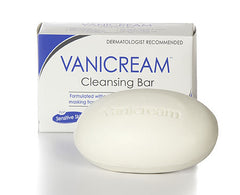
Healing skin that's suffered an allergic contact dermatitis will go much faster if you use a moisturizer after cleansing. This helps damaged skin barrier heal. As with your skin cleanser, this product needs to be free of allergens, hypoallergenic and non-irritating. My top choices include my Daily Moisturizing Face Cream and my natural formulations: Natural Face and Body Lotion or Natural Face and Body Butter. These latter two products are excellent and easy to use for face and body care.




Sun protection is important to prevent post inflammatory skin hyperpigmentation. Zinc oxide sunscreens are the best and most hypoallergenic sun screens. This mineral sunscreen ingredient is also hypoallergenic. Sheer Strength Pure Physical SPF 50+ Spray Sunscreen is a very easy to use product. I wear it every day to protect my neck, chest and hand skin. It is the product that my husband wears daily too.
The bottom line about allergic reactions to hair products:
Hair care products are a rich source of dermatologic misadventure – and job security for those of us who like to sleuth out allergic reactions for our patients. Hypoallergenic products are available. However, patients often don't like the way their hair feels and looks when they use them. That’s why all those allergens are packed into the popular hair care products – which we use at our own risk!
If you are struggling with an allergic reaction to your hair care products I strongly recommend trying these three products:
Reference:
Contact Dermatitis: A Practice Parameter–Update 2015
Fonacier, Luz et al.
The Journal of Allergy and Clinical Immunology: In Practice, Volume 3, Issue 3, S1 - S39


